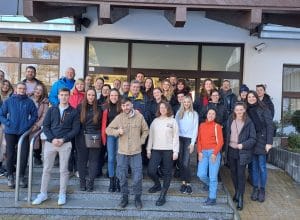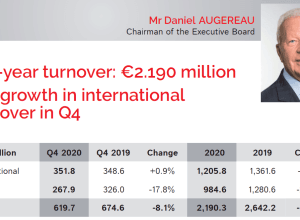How headhunting makes your life easier


Headhunting (also known as executive search or direct candidate sourcing) is a term frequently mentioned among HR professionals, and not just among them. But what does a headhunter do all day? And what benefits can their services bring?
Headhunting ranks among the most effective recruitment methods. The main reason is primarily that headhunters enable employers to find the best existing talent in the market.
Headhunters and headhunting agencies make life easier for companies
As a professional, you surely know what accepting a wrong candidate can cause to a company – conflicts and tension among employees, financial losses, hours spent correcting mistakes, or even damage to the company’s reputation. These problems could be avoided if a company hired a professional headhunter right from the start.
Many employers argue that they have been able to find and hire good people in the market using their own resources. The problem is that they’ve only found the good ones, not the best ones. Usually, companies select candidates with excellent resumes or those who have worked for well-known companies. However, that doesn’t mean they’re hiring the greatest talents in the market. The best candidates are usually those who aren’t actively seeking work at all.
So, companies that don’t use headhunters’ services may be hiring the best talents in the market, but only among those who are actively looking for work. And there’s a huge difference between these two groups.
Headhunters seek out talents even before the need arises
This means they don’t wait for a position to open up; instead, they continuously search the market. They do the most important work for companies – continuously building and developing relationships. And when a position opens, a good headhunter immediately knows where to find the right candidates and doesn’t have to sift through hundreds of profiles.
And what’s the financial reward for headhunters? If you use a professional’s services, you actually save money. Bringing talented people into the company will save you much more money and time than if you were to hire an average candidate and train them expensively.
Case study: Our approach to finding a leader for an automotive plant
Exactly this is what our client calculated and decided that when looking for a new leader for their company, they decided to use our Executive Search services. Our task was clear – to find a suitable plant manager among our client’s competitors – suppliers for the automotive industry in the Czech Republic, Slovakia, Germany, Poland, Bulgaria, or Romania.
Our first task was to understand the needs and expectations of the client. The criteria for the candidate’s profile were as follows: a minimum of three years of experience as a manager of a large automotive plant (1000+ employees), ideally with previous experience in cooperation with the VW or BMW group. The required language combination was: fluent English, advanced German, and Czech as an advantage.
We were looking for a personality who would not only be able to manage a large automotive plant but also earn respect from the existing management. It was clear that we were looking for something more than just an experienced professional. We were looking for a leader with exceptional communication skills and strong motivation to achieve goals.
Search and selection
We identified 25 companies – our client’s competitors. Then, we approached 50 potential candidates, representatives of these companies, conducted screening interviews, and held personal or video interviews with selected candidates.
The key goal was to present the client with 3-5 suitable candidates within three weeks. In addition, we had three other goals:
- Obtain feedback from the market (e.g., salary assessment),
- Introduce the company’s brand and culture, and
- Investigate brand awareness and attractiveness of the employer.
At each stage of the project, we maintained regular communication with our client. We provided transparent information about the progress of recruitment activities and provided regular updates. This was a collaboration based on trust and open communication.
Decision
After detailed interviews, we presented six suitable candidates to the client. These candidates were carefully selected and went through several evaluation steps to ensure they were the best choice. The client received a complete overview of each candidate, including personality assessment and references.
Four candidates were selected for personal interviews with the client. To ensure the quality of the selection process, the headhunter/consultant personally participated in each interview with the client.
As always, our goal was to successfully fill the position while deepening our long-term collaboration with the client.
Unfortunately, in this case, the process was not without complications. The recruitment project was extended by one month due to internal organizational changes in the company. As a result, some candidates withdrew from the selection process. At the same time, the company’s not very good reputation as an employer played a role.
Despite all the complications of the selection process, our client chose a suitable candidate, the job offer was successfully accepted, and after a three-month notice period, the candidate started employment.









